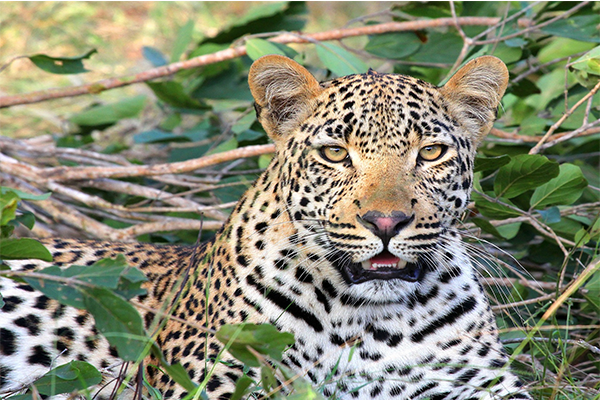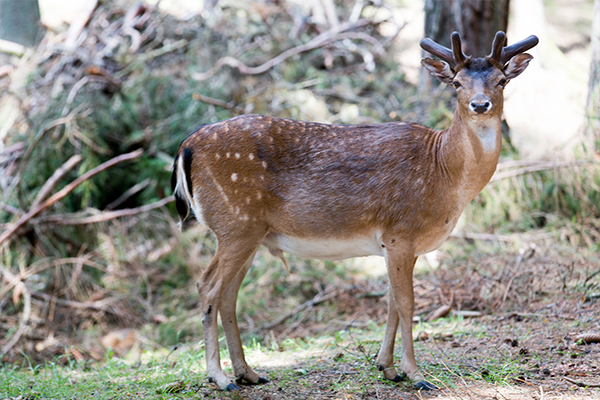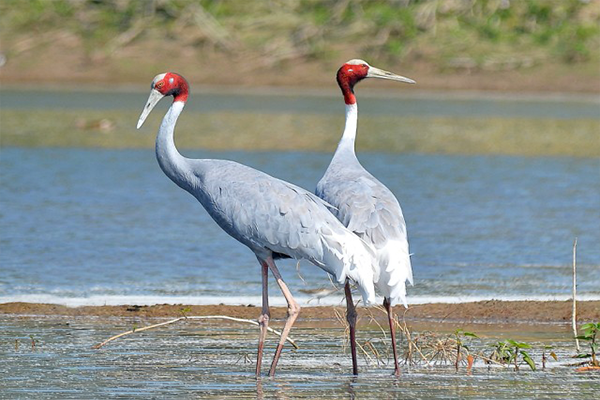Katarniyaghat Wildlife Sanctuary
The Katarniyaghat Wildlife Sanctuary is situated in the Upper Gangetic plain falling in the Terai of Bahraich district of Uttar Pradesh, India. The Katarniyaghat Forest provides strategic connectivity between tiger habitats of Dudhwa and Kishanpur in India and Nepal. The sanctuary has a mosaic of Sal and Teak forests, lush grasslands, numerous swamps and wetlands. It is home to a number of endangered species including gharial, tiger, rhino, Gangetic dolphin, Swamp deer, Hispid hare, Bengal florican, the White-backed and Long-billed vultures.
Destination Description
Katarniyaghat Wildlife Sanctuary is part of Dudhwa Tiger Reserve Lakhimpur kheri. The total area of Katarniyaghat Wildlife Sanctuary 400.09 sq.km. which is a part of the core area of Dudhwa Tiger reserve. There is a buffer area of 150.03 sq.km. contiguous to the sanctuary mostly in Motipur and Kakrha ranges of the division. The forest area of the Sanctuary has its characteristic complex of sal forests tall grasslands and riparion ecosystem of Girwa and Kaudiyalastreams of Ghaghra river. The Sanctuary having mosaic of diverse habitats is very rich in biodiversity and is have various endangered species of mammal, plants and avifauna

Fauna
Mammals – Panthera pardus (Guldar) , Panthera tigris ( Tiger), Felis viverrina (Fishing cat), Macaca mulatta (Monkey), Presbytis entellus (Langur), Heprpestes edwardsi (Mongoose), Herpestes auropunctatus ( small indian Mangoose), Viverricula indica ( small Indian civet), Canis aureus (Jackal), Mellivora capensis (Honey Badger), Lutra perspicillata ( smooth Indian Otter), Boselaphus tragocamelus ( Blue bull), Axis axis ( Spotted Dear), Axis porcinus (Hog Dear), Muntiacus muntjak ( Barking Dear), Cervus duvaceli (Swamp Dear), Cervus unicolor ( Sambar), Sus scrofa ( Wild Boar), Rhinoceros unicornis (Great Indian Rhino), Elephus maximus (Asian Elphant), Lepus nigricollis (Hare) .


Birds- Podiceps ruficollis (Dabchick), Pelicnus philipensis (spotbilled pelican), Phalacrocorax carbo ( Large Cormorant), Phalacrocorax niger (Lillte cormorant), Ardea cinera (Grey Heron), Ciconia ciconia (White Stocrk), Ciconia nigra ( Black strock), Threskiornis aethiopica (White Ibis), Gyps indicus ( Indian Longbilled Vulture), Pandion haliatus ( Osprey), Gallus gallus ( Red jungle Fowl), Grus antigone (Sarus Crane), Amaurornis phoenicurus ( whit Breasted water hen), Ninox scutulata ( Brown Hawk owl).
Reptiles – Magar, Ghariyal, Python, Sandboa, Banded crate , Rusel viper , Rat snake and all kinds of Fishes
Ideal time to visit
15th November to 15th June.
Visitor Attraction
- Nature Forest
- Grassland
- Safari
- Boating
- Bird Watching
- Dolphin Watching
- Tiger
- Elephant
- Crocodiles
- Snake
